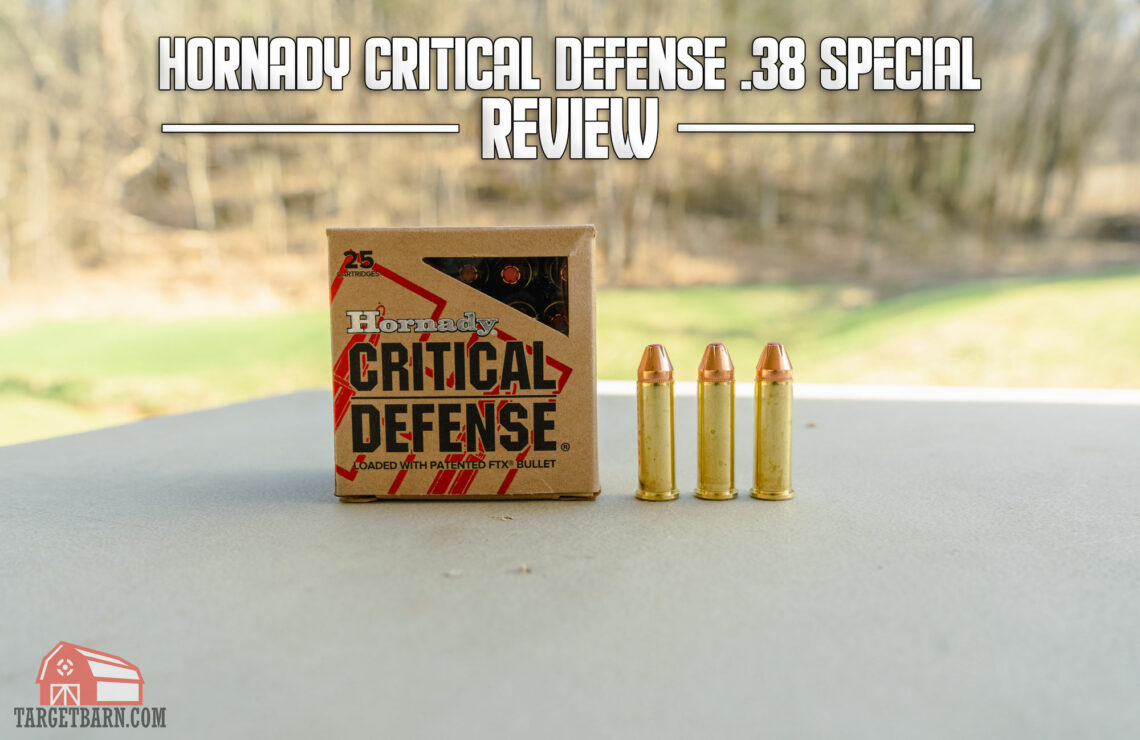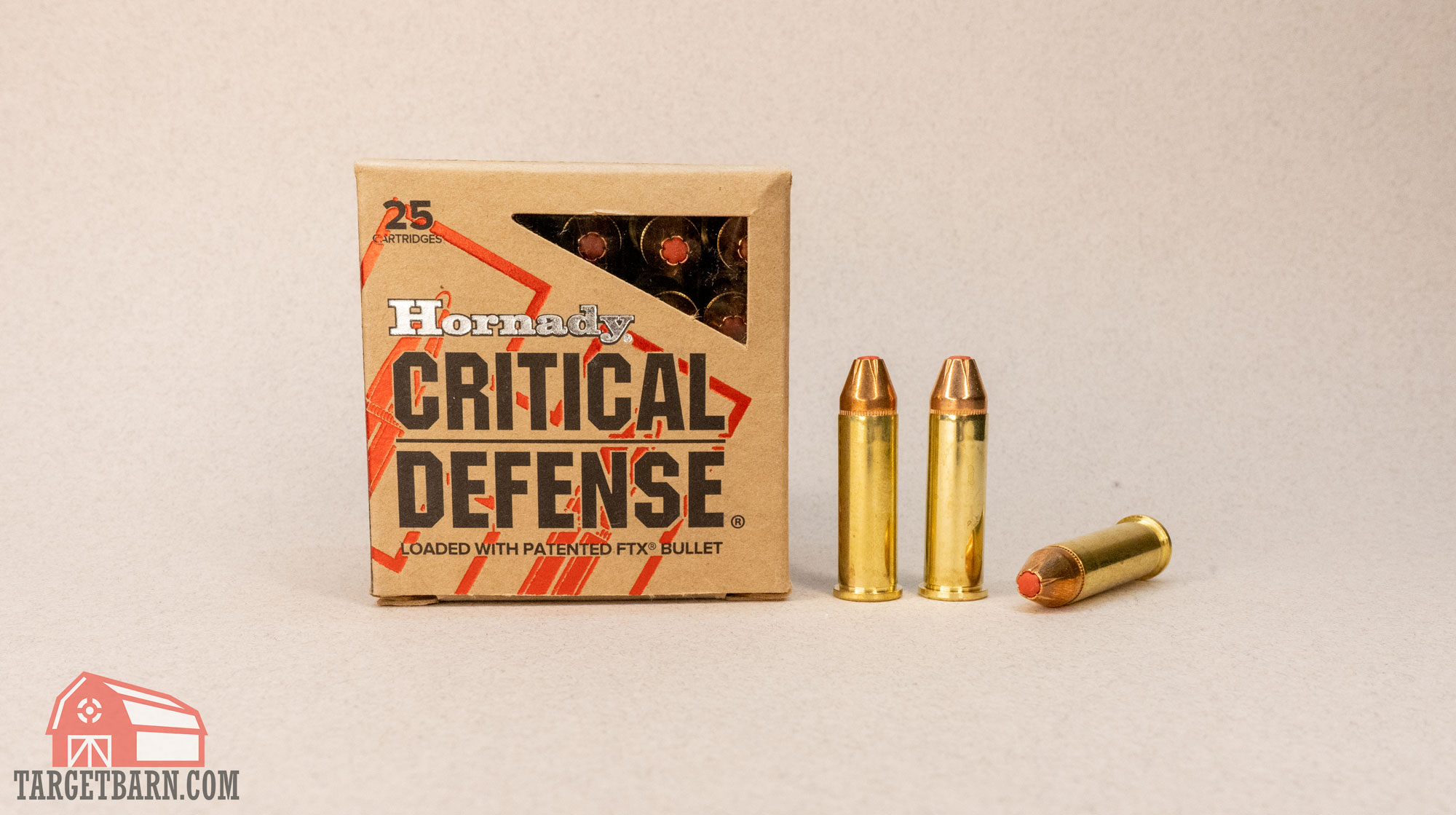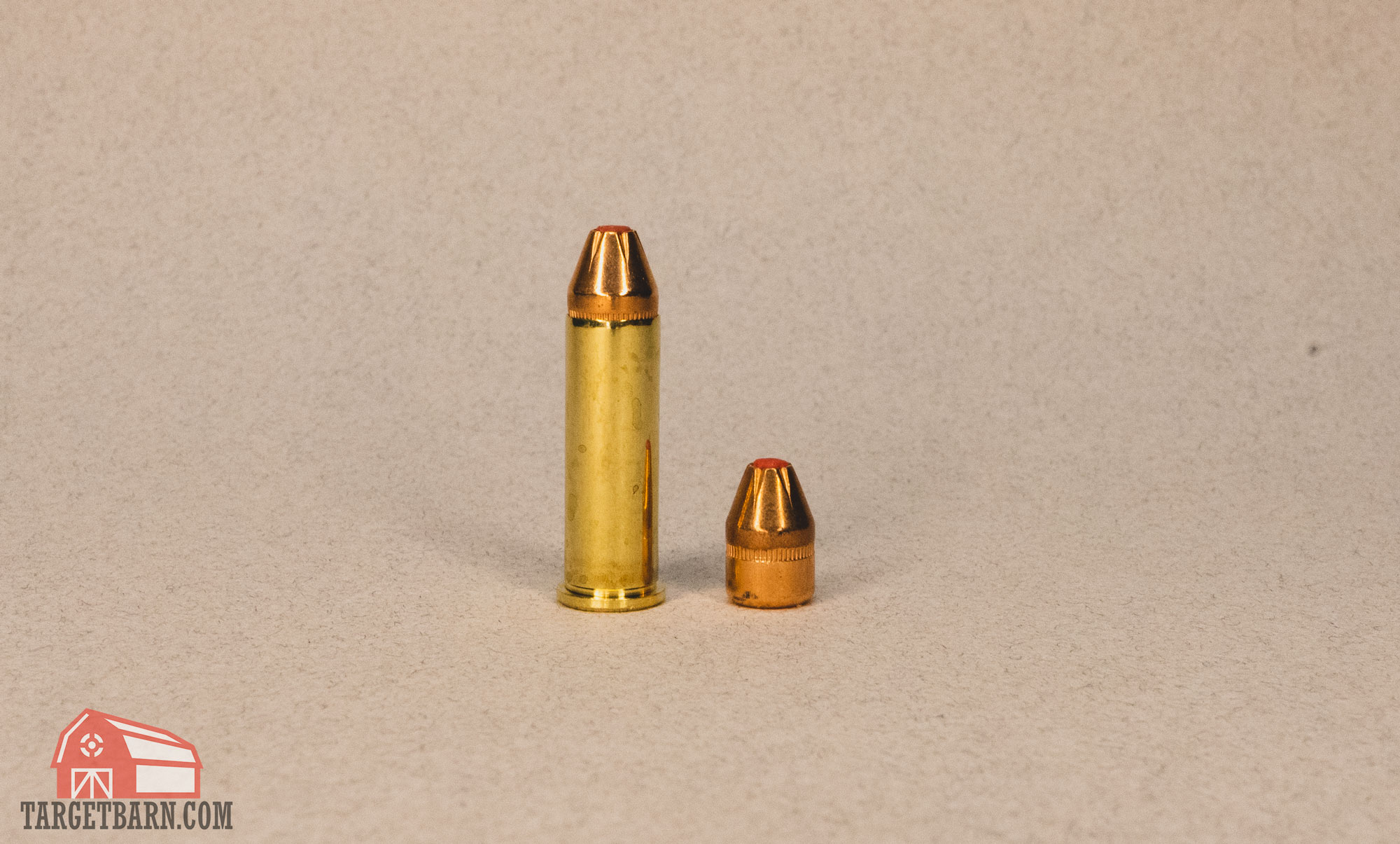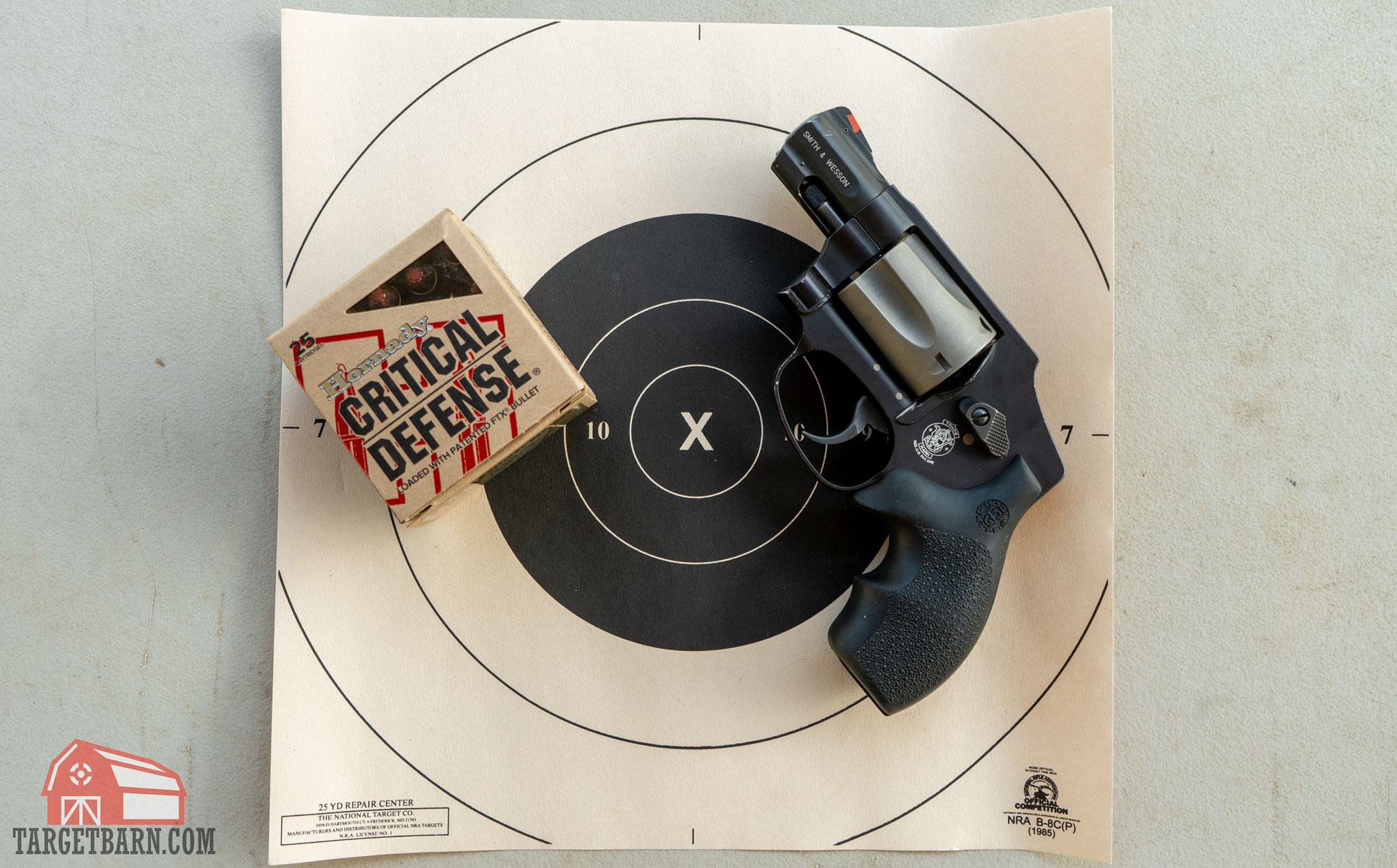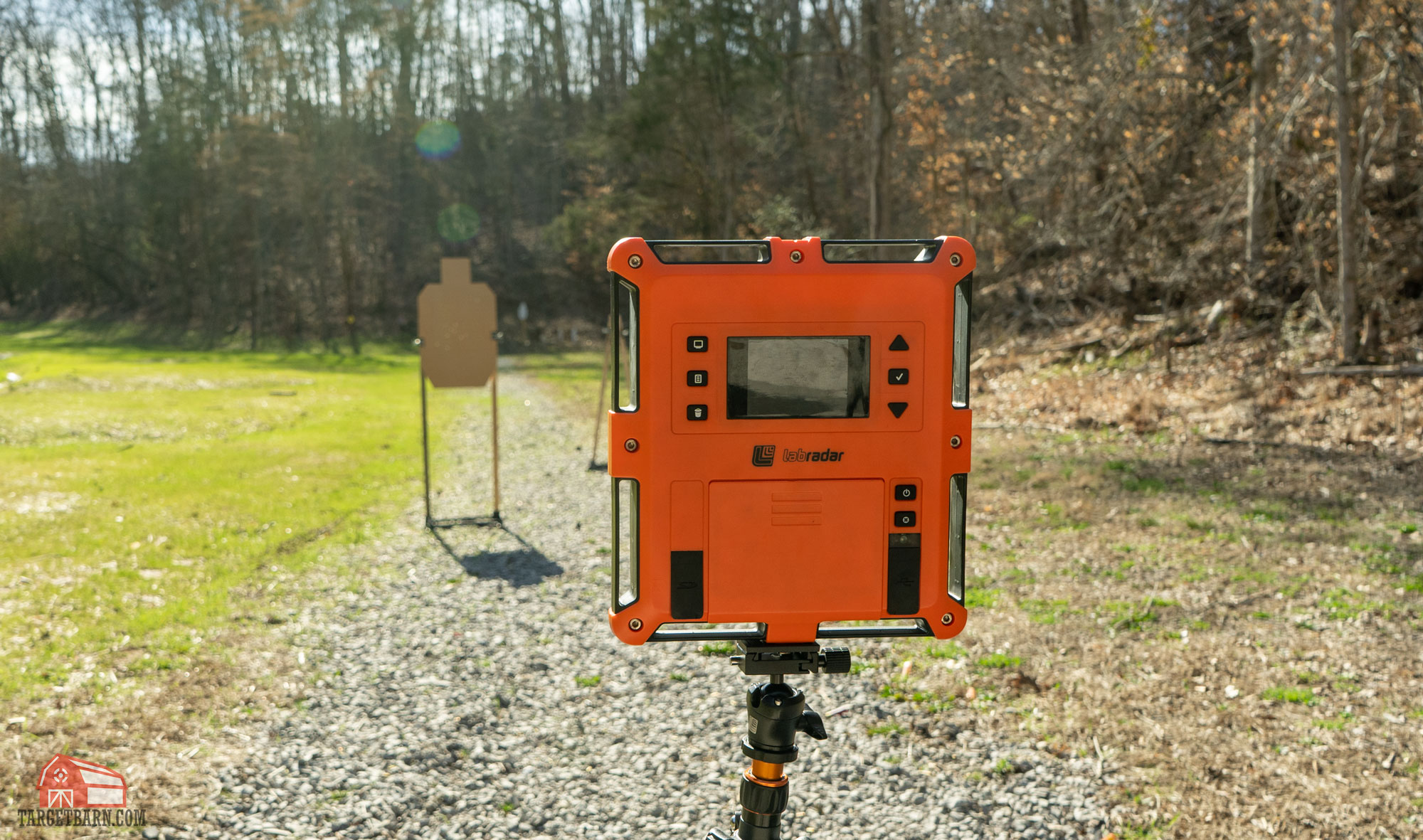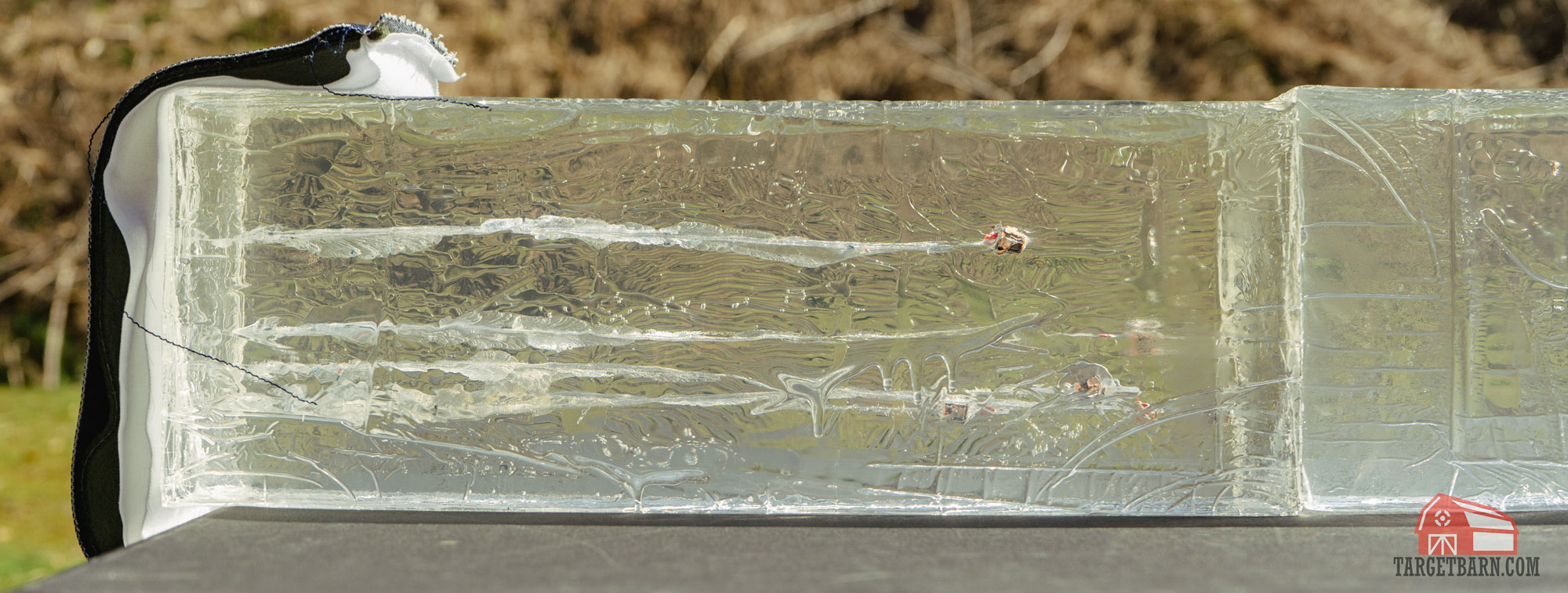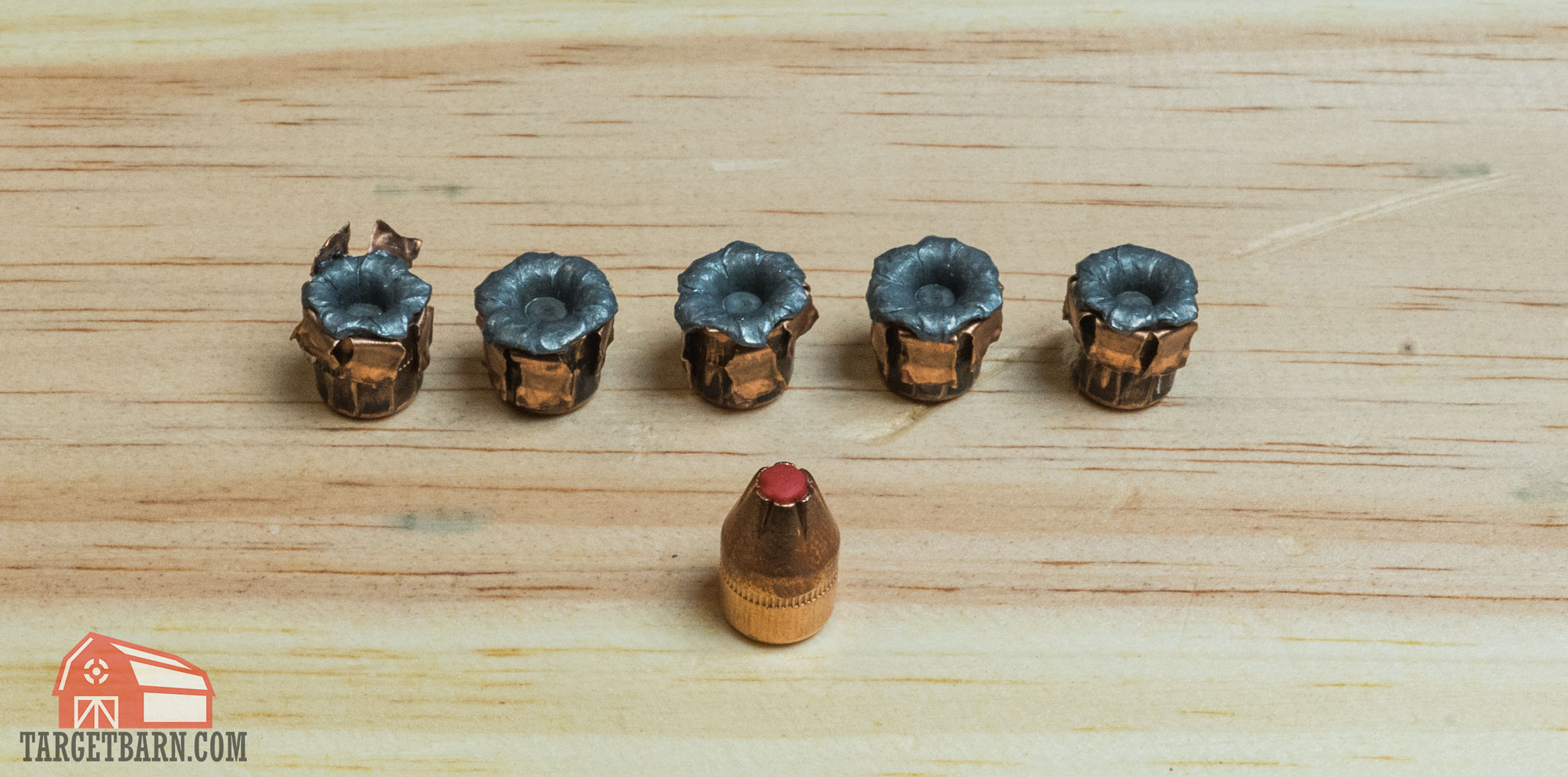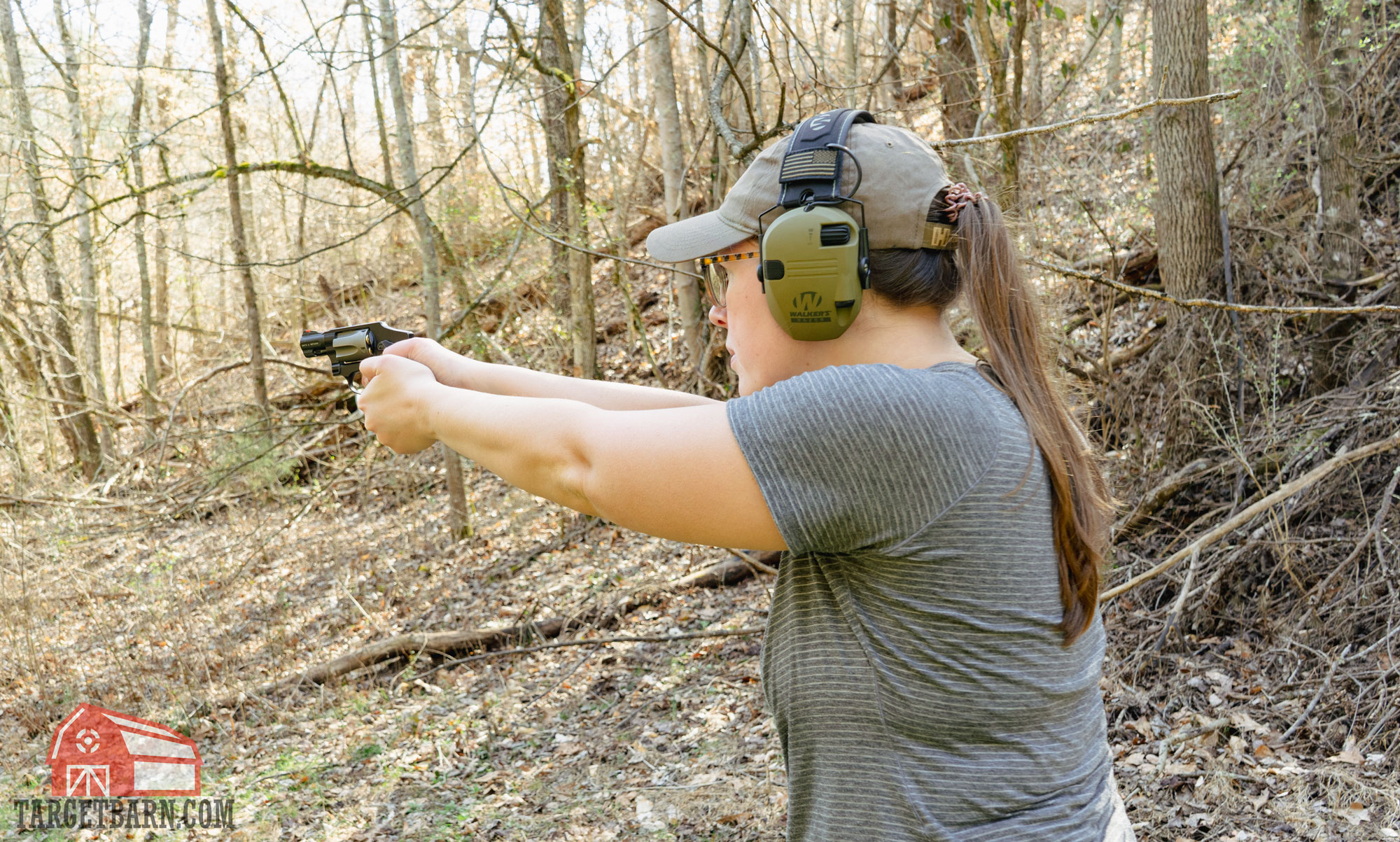The Hornady Critical Defense .38 Special +P 110gr FTX is a round you’ll find in many everyday carry revolvers. Hornady’s Critical Defense line of ammo is a popular choice among shooters as a self-defense round. Hornady offers the line in a number of handgun, rifle, shotgun and even rimfire calibers. Despite its popularity, the Critical Defense’s efficacy as a self-defense round is also hotly debated.
In this Hornady Critical Defense .38 Special +P 110 grain FTX review, we’ll be evaluating the round to see how it stacks up as a self-defense load.
Hornady Critical Defense .38 Special +P 110gr FTX Specifications
Hornady designed the Critical Defense line to be a self defense round for use in short barreled firearms, as opposed to the Critical Duty line which Hornady designed for law enforcement use. Critical Defense rounds feature Hornady’s FTX bullet and low-flash propellants for limited visual disturbances when shooting at night.
Under normal circumstances, Hornady loads the Critical Defense round with nickel-plated cases. Nickel-plated cases resist corrosion and are easier to see when chamber checking in low-light situations. However, due to supply chain issues, Hornady suspended the use of nickel-plated cartridges in May of 2021. As of February 2023, Hornady has not brought the nickel-plated cases back into production.
The FTX Bullet
Hornady loads the Critical Defense round with their Flex Tip eXpanding (FTX) projectiles. They originally designed the FTX bullet for use in lever guns as a solution to typical hollow points that expand too quickly and sacrifice penetration at higher velocities. The company claims that the FTX bullet expands reliably and doesn’t clog when passing through heavy clothing and other barriers – an issue that plagues other hollow point bullets.
The FTX bullet has a soft, red tip that compresses into the bullet. This initiates immediate expansion. The lead core consists of a single piece that is locked to the jacket with an InterLock ring that aids in weight retention, which Hornady claims results in deep penetration.
Accuracy and Performance
I tested the Critical Defense .38 Special +P 110gr FTX out of the Smith & Wesson 342PD AirLite revolver. Most shooters carrying this round are likely carrying it in a smaller snubnose revolver.
Hornady based the FTX’s design off of the XTP bullet, a bullet known for its accuracy and used by many competition shooters. So, it’s no surprise that the Critical Defense had no accuracy issues. When shooting from a bench rest at 15 feet and freestyle from 10 feet, the groupings were acceptable with no notable accuracy issues.
As a shooter with a weaker grip, shooting the Critical Defense .38 Special +P 110gr FTX was unpleasant due to heavy recoil. That’s probably because the 342PD AirLite is an extremely light gun at 10.8 ounces. Out of a slightly heavier gun, the recoil is more manageable, though with overpressure ammo, snappy recoil is to be expected.
Hornady Critical Defense .38 Special +P 110 Grain FTX Ballistics
Hornady claims that the Critical Defense is a top round for self defense. However, some firearm experts claim that in certain calibers, the Critical Defense is not an adequate defensive round.
We decided to see how the Hornady Critical Defense .38 Special +P 110 Grain FTX stacks up by testing its muzzle velocity and penetration in ballistic gel out of a Smith & Wesson 342PD Airlite.
Muzzle Velocity
Hornady advertises the Critical Defense .38 Special +P 110gr. as having a muzzle velocity of 1090 fps from a 4-inch barrel. From our own test using a LabRadar Chronograph and shooting with a Smith & Wesson 342PD with a 1.8-inch barrel, our five recorded muzzle velocities were:
- 938 fps
- 944 fps
- 963 fps
- 962 fps
- 988 fps
The average muzzle velocity from the five shots was 959 fps. With having half the barrel length to get up to speed, it makes sense that the Critical Defense’s muzzle velocity didn’t reach the same speed as with a revolver with a 4-inch barrel.
Penetration
Next, we tested the Critical Defense .38 Special +P 110gr. in ballistic gel to see how it penetrates and expands.
The FBI’s standards call for bullets to penetrate between 12 and 18 inches. This correlates with rounds that adequately penetrate soft tissue in real-world shootings. One thing to note is that Hornady did not design the Critical Defense to pass the full FBI protocol. That’s because it was not designed as a duty round for law enforcement. Instead, Hornady designed it as a defensive round that did not need to penetrate intermediate barriers other than clothing.
While we shouldn’t expect the Critical Defense to pass the FBI protocol, ideally, you want it to penetrate enough to reach vital organs. However, you don’t want it to over-penetrate, traveling through the intended target and potentially harming an unintended target.
The FBI testing protocols call for 10% ordnance gelatin. For our test, we used Clear Ballistics 10% Synthetic Gel with a four layer fabric covering as a barrier, shooting from a 10-foot distance. The synthetic gel typically shows similar results to the FBI’s organic-based ordnance gel, but rounds that don’t expand adequately may actually penetrate more in the synthetic gel than the ordnance gel.
While the FBI’s ballistics tests typically use a 4-inch barrel like you’d see on a duty gun, we used the Smith & Wesson 342PD Airlite with a 1.8-inch barrel. We did this because most people using this round are likely carrying some type of snubnose revolver.
The penetration results of the gel test (in no particular order) were as follows:
- 11.5″
- 12″
- 13.5″
- 14.5″
- 15.25″
Of the five Critical Defense rounds we shot in the ballistic gel, the average penetration was 13.35 inches. Four of the five shots were within the 12”-18” penetration depths. One round fell just short at around 11.5 inches. The bullet that traveled the furthest went to 15.25 inches. Overall, the .38 Special Critical Defense performed well in the ballistic gel, with no rounds over-penetrating.
Expansion
The next piece to look at is how well the bullets expanded upon penetrating the gel. There is no widely accepted expansion diameter standard. However, shooters tend to look for an expanded diameter of 1.5 times the original diameter. That’s because you want your defensive round to create a wide wound channel. This occurs when the bullet has expanded as it travels through the target.
The .38 Special diameter is .357″, so we are looking for an expanded diameter of at least .535″. Our results were:
- .45″
- .47″
- .48″
- .48″
- .58″
Ultimately, only one round expanded to be 1.5 times greater than the unfired bullet. While all five rounds expanded some, we didn’t see the full expansion we should expect, with an average expansion of .49″. This is likely because the rounds didn’t get up to full speed like they might out of a 4-inch barrel. This is probably why the rounds penetrated so well — because they didn’t fully expand.
Hornady Critical Defense .38 Special +P 110gr FTX Final Thoughts
It’s ultimately Hornady’s excellent quality control that draws shooters to its ammo. Customers can expect a consistent product from Hornady, which is important when seeking out a round that could save your life.
The Hornady Critical Defense .38 Special +P 110gr FTX round isn’t the worst load you can carry, but it isn’t the best either. While it is an accurate round and penetrated well, it did not adequately expand when fired out of a snubnose revolver. It may perform better out of a longer barrel, but there are better options for your snubby revolver. Instead, you may consider a 148gr wadcutter, like the Federal Gold Medal Match 148gr Wadcutter that penetrates deeply and has manageable recoil. While wadcutters don’t have the expansion we look for, its rough edges will cause significant tissue damage which is where the Critical Defense falls short.

